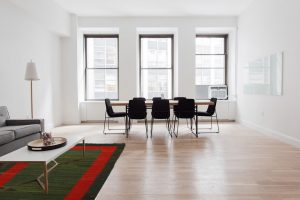One look at a Kilim and you know that you’ve found something truly special. This is no ordinary type of rug. Kilims are different from most types of rugs in so many different ways but one of the most notable differences lies in the absence of any pile.
Kilim is a flat, no-pile rug that has become synonymous with certain regions, especially Turkey, North Africa, Iran, Afghanistan, the Balkans, Central Asia, and Pakistan.
These rugs are woven using one of the many flat weaving techniques that give them that characteristic flat appearance.

Weaving of Kilims
The visually stunning Kilim designs are made by carefully interweaving differently colored warps and wefts to create a flatweave rug.
Typically, artisans use a technique known as slitweave, which is responsible for giving Kilims their smooth appearance.
This technique of weaving Kilim rugs causes the warps to be loosely spread while the wefts are densely packed together due to which they completely envelop the warps. So, you actually end up with a weft-facing weave. This prevents the structure from weakening.
The slitweave technique is primarily used to create diagonal and geometric patterns. The technique gets its name from the fact that there is a gap between two blocks of color.
The weavers always work on one block first before they begin the next block. Also, using slitweave technique, artisans enjoy more freedom to be creative than what they would have had if they had used the plainweave technique.
The result of the Kilim getting the same pattern on both sides of the rug is that there is no distinct topside or underside. You can simply place the rug any side you like depending on your preferred look.
Kilim Motifs
One of the distinguishing features of Kilims is the motifs on these rugs. These motifs are not just decorative. Each motif also has a hidden meaning to it.
- Ram’s Horn: A Ram’s Horn symbolizes fertility, power, and heroism. If the rug is woven by a lady, the ram’s horn could represent her spouse or lover.
- The Eye: Just like the Egyptians have the Eye of Horus, Kilim artisans use the eye symbol to ward off evil. You will notice that the center of the eye usually is woven with blue thread and in situated amidst geometric shapes.
- The Dragon: This mystical beast is omnipresent and symbolizes power, strength, and force as it is capable of spewing out flames from its mouth.
- The Scorpion: From ancient times, artisans have believed that if they weave a dangerous animal, they will be protected from it. This belief is the reason you will see scorpions woven in Kilim rugs. Sometimes, instead of the scorpion, you may find snakes or wolf paw woven into the pattern.
The star, hands on hips, swan, swastika, ying and yang, water of life and the Phoenix are other motifs that are popularly incorporated into Kilims.
Decorating with Kilims
Kilims are extremely versatile because of the way they are woven. Not only can you use a kilim as a rug to immediately uplift the look and feel of a room, you can also use the textile as a wall hanging, cover for an ottoman or as colorful cushion covers.
You can even give your home a Middle Eastern feel by using Kilim to cover floor cushions. The vibrantly colored Kilim can instantly transform the look and décor of any room that it is placed it, whether on the floor or as a wall hanging.

2 thoughts on “The Artistry Of Kilim Rug Weaving”
I am hoping to find someone who can help me decipher some of the symbols on my kilim. I bought it nearly 30 years ago in Turkey. I have looked through many of the things online, but nothing is similar to my kilim. I can send some pictures if you reply. P.s. I am not interested in buying or selling, just hoping for more info.
Dear Amber,
We don’t carry Turkish rugs and unfortunately, I couldn’t help.